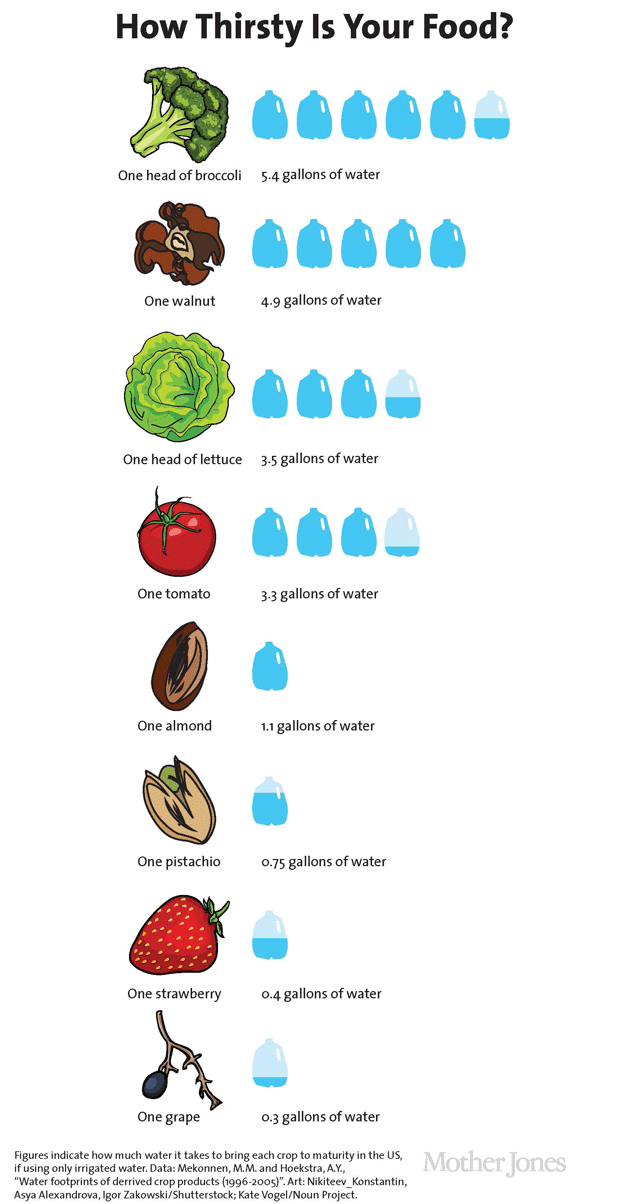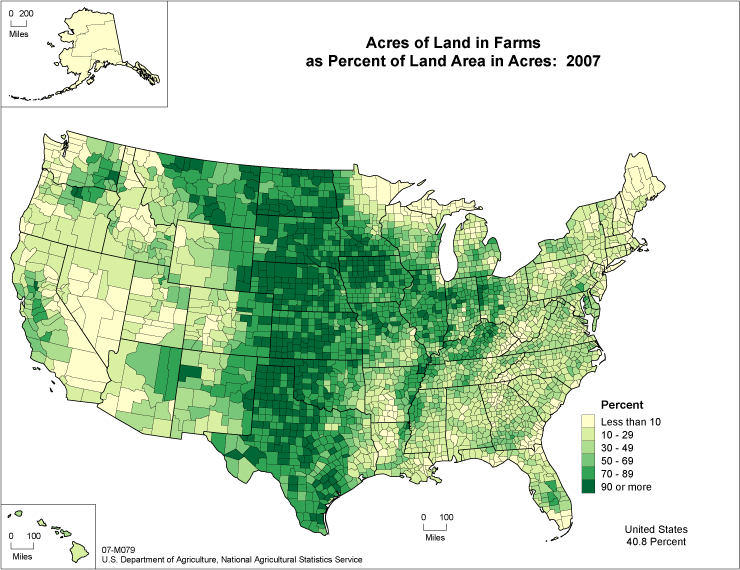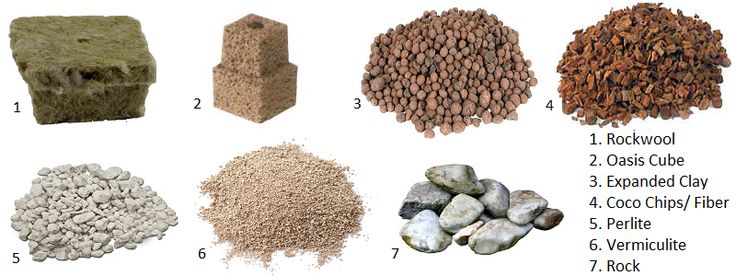A typical measurement in the agricultural community is gallons of water required to fully grow a plant. Some of these are quite astonishing.

The image above is the water required in traditional farming methods, but in hydroponics, there is a huge potential to decrease this ridiculous amount of water being used. Hydroponics uses 70-90% less water than traditional farming and the ways that it accomplishes this impressive number were very interesting when I learned them! Additionally, there is ton less nutrients that are wasted, which are saved in the same way that water is conserved.
There are multiple methods that hydroponics uses to save water and nutrients, but generally it all falls into one category. Hydroponics uses less water and nutrients because it is a closed system. This means that it can eliminate evaporation, catch excess, and recycle the water and nutrients to be used by another plant.
I will start by explaining how most hydroponic systems eliminate evaporation. One form of evaporation that hydroponic systems don’t stop is evapotranspiration, which is when plants soak up water then evaporate through the leaves. This is natural for plants and helps keep the humidity of the air surrounding the plants ideal for fastest growing (80% humidity is ideal). Hydroponic systems do a good job of temperature control to not require the plant to do excess evapotranspiration. Keeping the temperature from getting too hot also has other benefits. The water tanks should remain relatively cool to maximize plant growth, so this is another way indoor hydroponic systems avoid evaporation. This is about the opposite of greenhouses, which heat up a lot, which causes more evapotranspiration, leading to a higher loss of water. The other main way water escapes the system is through leaks, which happen on traditional farms and hydroponic systems alike, and this is controlled by how diligent the farmers/engineers are.
Apart from stopping evaporation by keeping the farms cool, none of the water ever leaves the system, so it never leaves the circulating pump system. This is great news for hydroponic farmers, because then they just need to monitor the nutrient and water levels of the entire system and add water and nutrients when it is getting low. This is a much more scientific method than traditional farming because then it allows the plants to soak up the water and nutrients they need as they grow instead of having to time when you water the plants.
Now we can get to discussing the important part of all this. The application. Lots of places in the world right now have a lack of water. This need ranges from inconvenient to crippling, and with farming being such a large consumer of water, hydroponics offers a unique solution to many countries and regions. The middle east is specifically investing heavily in hydroponic farming because of the energy intensive process of desalination. Hydroponics offers a better solution where much less water is used, and they can get much fresher foods than having to import crops and produce in from all over the world. For regions like these, I expect hydroponics will have the most success in the upcoming years.



